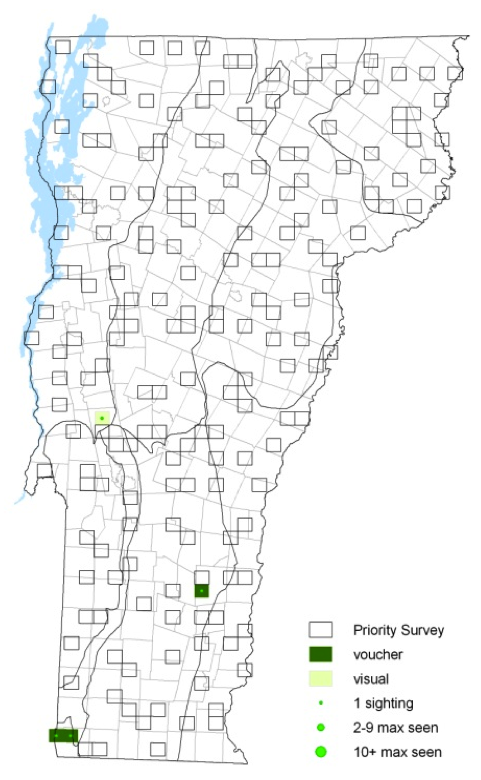|
Migrant-Rare Breeder? Conservation Status North American Range |
The only species in this mostly tropical genus that pushes northward in the summer to breed, often migrating along river corridors. They lack cold tolerance and cannot overwinter. Both males and females are fast fliers. Males perch during the day on low plants or bare ground to watch for females, flying periodically to patrol or to chase other flying insects. Females lay eggs singly on leaf buds or on the upper-side of hostplants leaves. Caterpillars are solitary and eat the leaves of their hostplants and sequester toxins to deter predators.
Identification
Upperside is brown. Forewing with two orange cell bars and two eyespots; part of white subapical band appears in the largest lower eyespot. Hindwing has two eyespots; upper one is largest and contains a magenta crescent. Underside of hindwing is brown or tan in the summer form and red in the fall form.
Flight
In the South they have two to four broods and fly from May through October. Four records during VBS: 26 May 2004 in Pownal (K. Hemeon), 11 August 2006 in Brandon (J. Bush), 23 August 2006 in Chester (M. Reiter), and 15 September 2006 in Pownal (K. Hemeon). The May record suggests that it may breed in Vermont in some years.
Distribution and Habitat
A southern species only rarely found in the state. There are no known historic records only four reported during our survey from the southern half of Vermont. They are found in open habitats with low vegetation and bare ground. Caterpillar hosts are Snapdragon (Antirrhinum), Toadflax (Linaria) and plantain (Plantago). Adults nectar at aster (Aster), Chickory (Cichorium intybus), Gumweed (Grindelia) and others.







